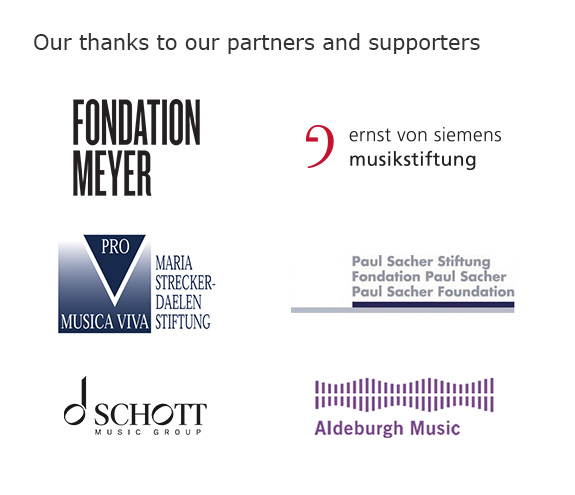By Tobias Bleek
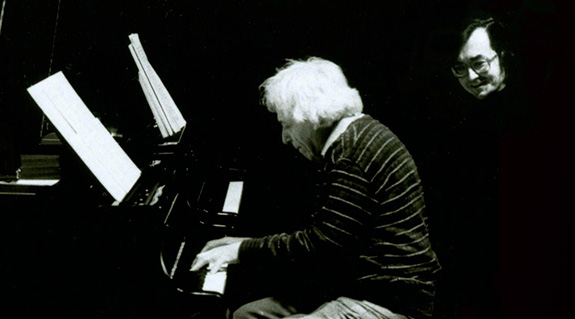
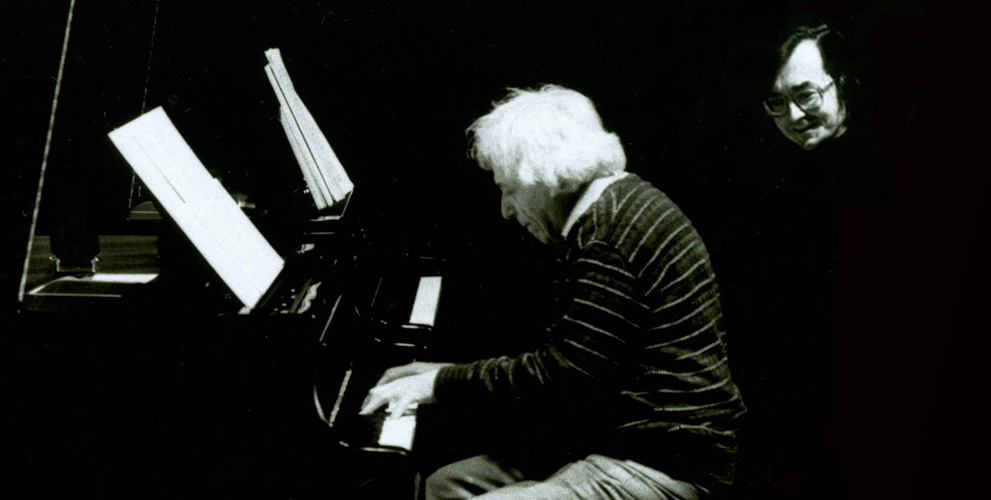
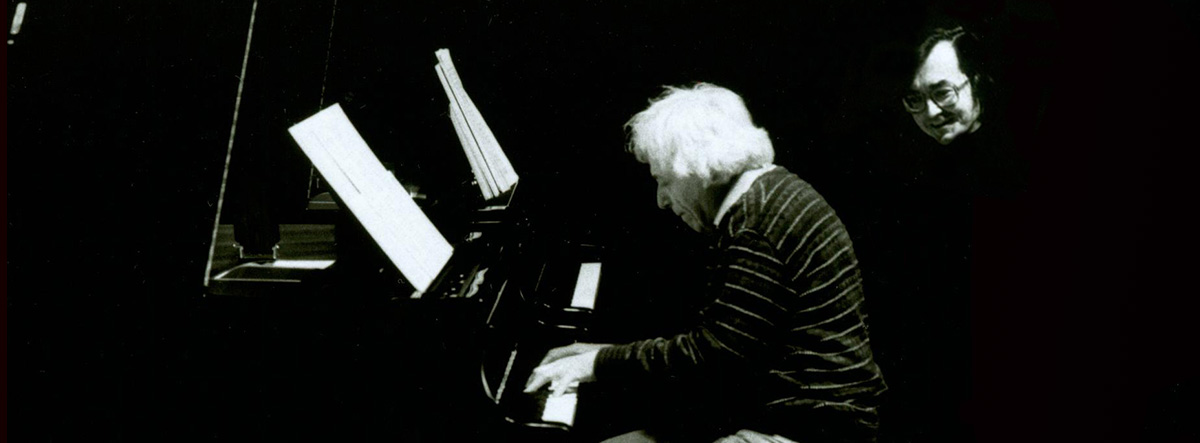
Ligeti and Aimard preparing a recording session in Hamburg, 1995 (Photo: Markus Bollen)
Pierre-Laurent Aimard on his collaboration with György Ligeti
It is well known that György Ligeti made the highest demands not just of himself, but also of those who performed his music. Pierre-Laurent Aimard was one of the musicians with whom he worked very closely. The French pianist began to study Ligeti’s music in the early 1980s as a founding member of the Paris-based Ensemble Intercontemporain. Their collaboration intensified from the mid-1980s and in 1987 Aimard performed the French premiere of the first book of the Études pour piano. A recording of the performance was subsequently released, together with Ligeti’s Trio for Violin, Horn and Piano, by the French label Erato.
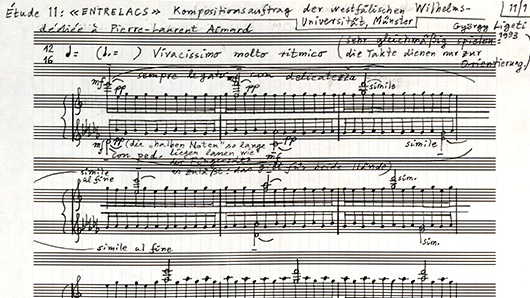
Autograph score for Étude 12: Entrelacs with a dedication to Pierre-Laurent Aimard, page 1 (Paul Sacher Foundation Basel). As the manuscript shows, at the time it was composed, Entrelacs was intended to be the eleventh étude.
Their working relationship became even closer in the 1990s. In the period from 1993 to 2001, the composer entrusted Aimard with the premieres of nearly all his late piano études (Nos. 10, 11, 12, 14, 15, 17 and 18 as well as the subsequently withdrawn étude L'arrache-cœur). The fact that Ligeti dedicated two of these études to Aimard (No. 10: Der Zauberlehrling and No. 12: Entrelacs) shows how much he appreciated the work of the pianist from Lyon. Indeed, he even claimed that Aimard’s virtuosic playing had inspired him to compose some of his most complex piano études and ultimately ensured that Aimard played a key role in the recording of his complete works for the György Ligeti Edition (Sony) and its sequel, The Ligeti Project (Teldec).
Pierre-Laurent Aimard on the Ligeti CD edition
After many years’ preparation, Aimard recorded, for the Ligeti edition, the first fifteen études and the piano collection Musica ricercata under the composer’s artistic direction in December 1995 and May 1996 (György Ligeti Edition - Volume 3: Works for Piano). Also in this edition are his recordings of the Trio for Violin, Horn and Piano, Three Pieces for Two Pianos, early two- and four-hand piano works, and songs for soprano and piano, as well as the Piano Concerto (the latter for Teldec as The Ligeti Project - Volume 1). The last three études (Nos. 16–18) were first recorded for the African Rhythms CD, where works by Ligeti and the American composer Steve Reich are juxtaposed with the singing of the Aka Pygmies.
Pierre-Laurent Aimard on Ligeti’s performing suggestions
Anybody who delves deeper into Ligeti’s piano music is confronted with an array of questions. Although the main source for engaging with the works is, of course, the printed score, at various times the composer himself pointed to the importance of non-notated or un-notatable elements. As he explained in an interview in 1984: “Some guidelines on performance can be communicated very precisely – pitches, rhythmic configurations, tempo, etc. And yet there are some aspects that can’t be conveyed with the same precision: not just the dynamics, but things that determine the spirit of the whole piece. And we can deal with these features quite objectively. I’m talking about phrasing, about maintaining a form [...]” [1]↓
Against this background, it is easy to understand Ligeti’s interest in collaborating intensively with selected musicians to whom he could communicate his ideas about his music and its performance. The performing suggestions that Pierre-Laurent Aimard noted down at the time and that are presented on this website were gleaned from numerous working sessions with Ligeti before concerts, premieres and recordings as well as from their conversations (see the video interview with Pierre-Laurent Aimard).
